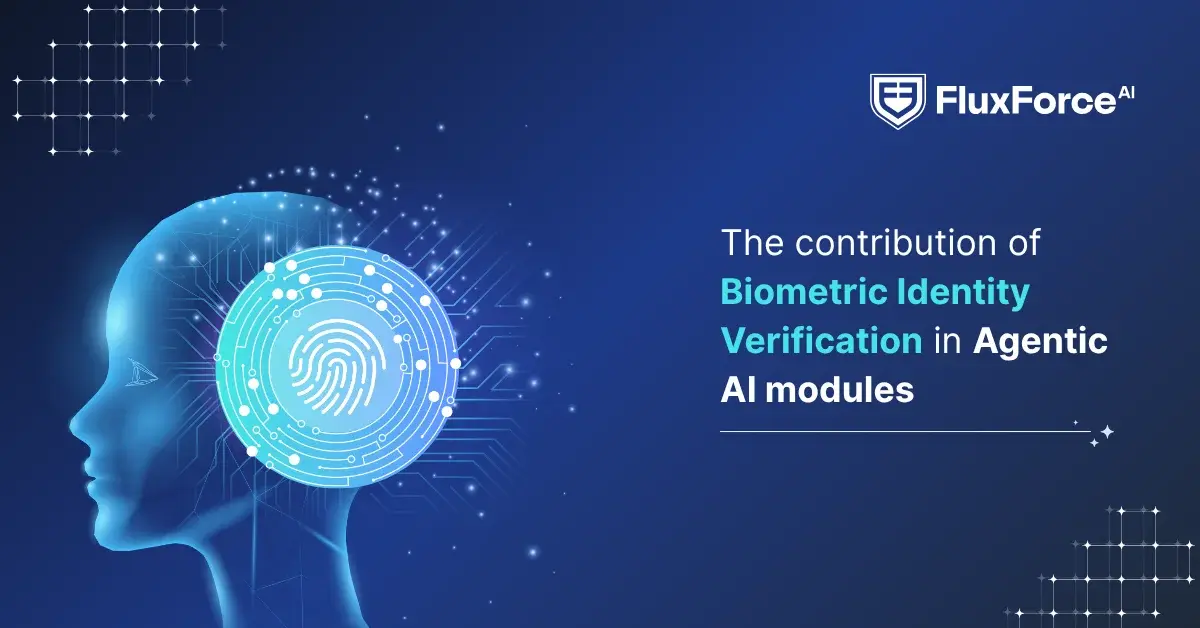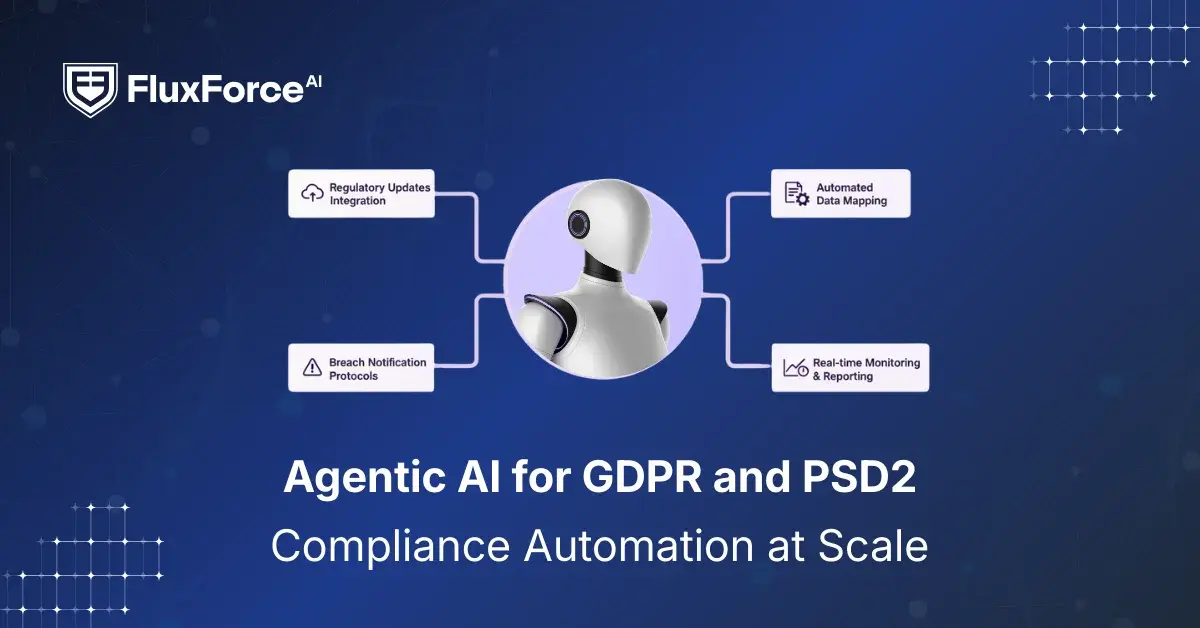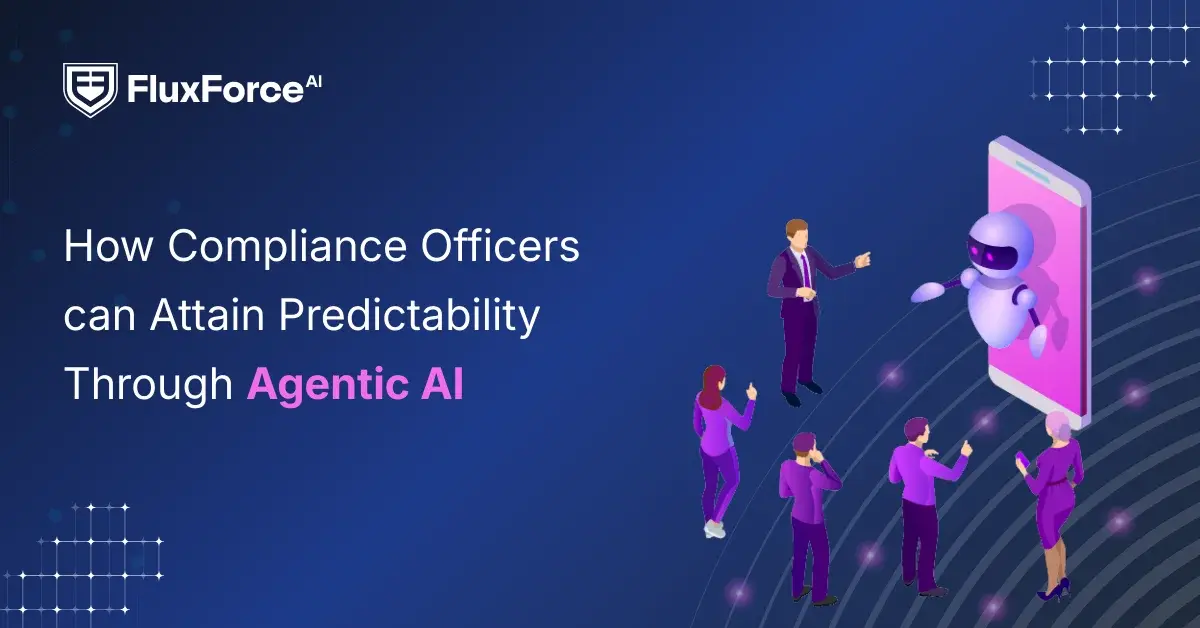Listen To Our Podcast 🎧

Introduction
Agentic AI modules consistently perform tasks with autonomous intelligence; however, this independence lacks in verifying the identity of the entities they interact with.
Even the most advanced AI models, trained on extensive datasets and complex decision frameworks, cannot distinguish between legitimate users and fraudulent actors without a unique, non-replicable authentication system integrated into their workflow.
Despite growing AI adoption, 68% of organizations still report identity-related fraud incidents, primarily due to weak authentication layers. For ensuring the security and reliability of Agentic AI modules, the contribution of Biometric Identity Verification tools has become incomparable.
Key Biometric Technologies Strengthening Cybersecurity in AI Modules

The biometric AI integration powers secure, verified authentication that normal agents cannot achieve. Below are the most common technologies driving this transformation:
1. Fingerprint Recognition
Fingerprint scanning in agentic modules provides unique, non-replicable credentials for quick verification. Through the combination of automated identification and AI-driven anomaly detection, it drops identity-related incidents by up to 40% .
2. Facial Recognition
Facial recognition verifies individuals in real time, even in remote or on-site environments. Advanced algorithms analyse complex facial geometry with over 98% accuracy, making it ideal for banking, insurance, and other sectors where secure, rapid authentication is essential.
3. Iris and Retina Scans
Iris and retina scans provide some of the most precise biometric identifiers, with minimal false positives. AI modules use these scans to protect high-security environments, ensuring that only authorized personnel have access to sensitive systems.
4. Voice Recognition
Voice biometrics authenticate users through unique vocal characteristics. When integrated with agentic AI, this technology enhances transaction authorization and automated customer service, reducing the risk of fraud in mobile-first services.
5. Behavioural Biometrics
Behavioural biometrics track patterns such as typing speed, mouse movements, and touchscreen gestures. Agentic AI’s continuous monitoring systems helps detect anomalies in real time, accelerating fraud detection by up to 30% and adding a dynamic security layer beyond static credentials.
How Biometric Identity Verification is Used in Agentic AI
From ensuring secure access controls, reducing the risk of fraud, and enhancing trust in AI decisions, the role of biometric verification is critical. Below are examples of agentic AI with digital identity verification across key industries:
In Banking & Insurance
1. Customer Onboarding: Agentic AI, with an integrated biometric security layer, enables verification of customers with facial recognition, fingerprints, or document scans. Through secure and seamless digital verification, banks report up to 40% reduction in identity fraud and significantly faster account creation.
2. Transaction Authorization: Under financial environments, high-value transactions are now increasingly authenticated using biometrics. Agentic AI ensures only verified users approve transfers, preventing unauthorized access and reducing fraud risk in mobile and online banking platforms.
3. Compliance & Audit Trails: Biometric verification ensures secure workflows, while AI agents automatically generate standardized, auditable records for KYC, AML, and GDPR compliance. This automated logging significantly reduces manual intervention and operational errors.
In Supply Chains & Logistics
1. Vendor and Partner Verification: Agentic AI leverages biometric authentication to confirm vendor and partner identities before granting system access. The AI learns over time to autonomously enforce access rules, monitor log activity, and prevent unauthorized manipulation of supply chain systems.
2. Secure Access to Warehouses: In high-risk environments, AI modules use fingerprint or iris scans to autonomously control access to sensitive facilities. AI logs each access event automatically, improving security and enabling real-time monitoring.
3. Shipment and Delivery Verification: Before shipment handling, Agentic AI rigorously verifies driver identities through biometric authentication. With automated tracking enabled, the system ensures secure deliveries, reduces theft and misdelivery by up to 30%.
Results from Real-World Deployments

Major organizations, including HSBC and Panasonic, have deployed AI agents with robust biometric authentication, achieving significant improvements in security, operational efficiency, and regulatory compliance. Key contributions of integrating biometrics in agentic AI include:
1. Enhanced Security: Integrated AI agents continuously verified user identities with biometrics, significantly reducing unauthorized access, insider threats, and account compromise.
2. Improved Agentic Module Reliability: Biometric verification eliminated false positive authentication failures by 87%, enabling AI systems to execute autonomous transactions without manual intervention.
3. Regulatory Compliance: Automated biometric capture reduced KYC processing errors while maintaining audit trails that met AML and GDPR requirements. Organizations reported an average of 73% fewer compliance violations during regulatory reviews.
4. Robust Fraud Detection: Real-time biometric monitoring detected synthetic identity fraud 8.2 seconds faster than traditional systems, preventing an average of $2.3 million in fraudulent transactions per quarter across mid-sized financial institutions.
5. Seamless User Experience: Verified users completed onboarding 6x faster than password-based workflows. AI handled verification automatically, balancing convenience with strong security.
6. Adaptive and Scalable Authentication: Risk-based biometric verification scaled across thousands of concurrent users without performance degradation, automatically adjusting authentication requirements based on transaction risk profiles and behavioural patterns.

Shaping the Future of AI in Finance
Fluxforce research uncovers how banks and enterprises are adapting to fraud, compliance, and data challenges in 2025.
Integrating Biometric Verification in AI Systems: Best Practices

Integrating biometric verification into AI systems requires careful planning, robust security measures, and continuous monitoring. Below is a proper implementation guide for organizations.
Define Clear Identity Verification Policies
Establish precise policies for who, when, and how identities are verified. Clearly define acceptable biometric modalities, access levels, and escalation processes to ensure consistent and auditable verification across all AI-driven systems.
Ensure Data Privacy and Compliance
Store and process biometric data in compliance with regulations such as GDPR or CCPA. Encrypt sensitive data, limit access, and implement audit trails to protect identities while maintaining regulatory adherence.
Integrate Biometric Verification with AI Workflows
Embed biometric checks directly into AI workflows. Ensure that identity verification occurs at critical decision points, enabling autonomous systems to validate users continuously without disrupting operational efficiency.
Implement Adaptive Authentication Mechanisms
Use risk-based adaptive authentication. Adjust verification requirements dynamically based on user behaviour, access location, and transaction risk to maintain security while optimizing user experience.
Conduct Continuous Monitoring and Audits
Regularly monitor AI decisions, authentication logs, and system interactions. Perform periodic audits to identify anomalies, evaluate performance, and refine verification policies for consistent and secure operations.
Plan for Scalability and Future Upgrades
Design biometric systems to scale with organizational growth. Plan for new modalities, increased user volume, and emerging threats, ensuring AI modules maintain reliable authentication without performance degradation.
Turn Your Data into Real-Time Decisions
Transform your third-party risk management with Agentic AI Agents.

Conclusion
Biometric identity verification has proven essential for securing agentic AI deployments in enterprise environments. As autonomous systems handle increasingly sensitive operations—from financial transactions to access control—the integration of biometric authentication provides the foundational trust layer these systems require.
For organizations planning to alleviate the operational risks of autonomous AI, integrating biometric verification is no longer optional; it is the critical control that transforms agentic AI from a potential liability into a secure, compliant, and trusted operational asset.






Share this article